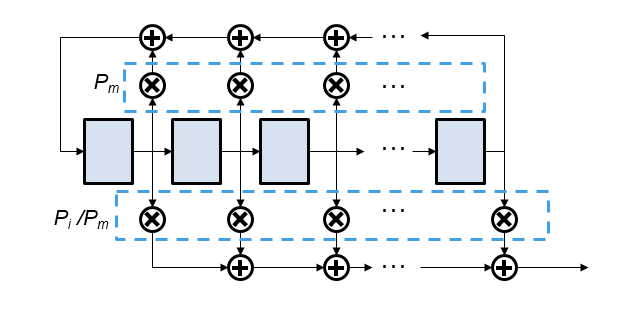LTE Gold Sequence Generator
Generate Gold sequence
Libraries:
Wireless HDL Toolbox /
Utilities
Description
The LTE Gold Sequence Generator block returns Gold sequences generated using the polynomial and shift length specified by LTE standard TS 36.212 [1]. Gold codes are pseudorandom sequences that have high autocorrelation and low crosscorrelation. Due to these properties, Gold codes are widely used in communications systems. For example, they are used to separate different mobile cells operating on the same frequency. LTE systems use a Gold sequence generator for reference symbols and for scrambling/descrambling data, such as in MIB and SIB coding and decoding.
This block provides minimal latency by implementing the shift register initialization in parallel.
Use the load control signal to indicate when the init value is valid. Use the enable control signal to request the next Gold sequence value. The valid signal indicates when an output sample is available. The first output sample is ready three cycles after enable is asserted. The data and valid outputs follow the pattern of the enable input.

Examples
Ports
Input
Output
Algorithms
References
[1] 3GPP TS 36.212. "Multiplexing and channel coding." 3rd Generation Partnership Project; Technical Specification Group Radio Access Network; Evolved Universal Terrestrial Radio Access (E-UTRA). URL: https://www.3gpp.org.
Extended Capabilities
Version History
Introduced in R2018a


